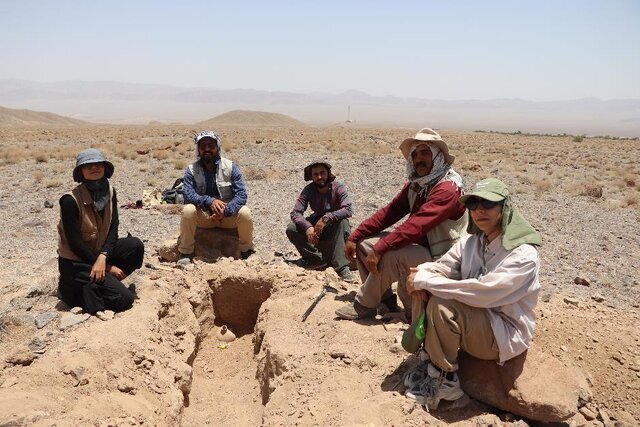Historic graveyard with 1,793 ancient graves identified in central Iran

TEHRAN—A group of Iranian archaeologists identified 1,793 graves in an area of 1,000 hectares in Yazd province during their one-month explorations. Some 90 percent of tomb chambers have reportedly been destroyed in illegal drilling.
Archaeologists attribute the antiquity of these graves, in some of which burial objects have been found, to the Parthian era, ISNA reported.
The Cultural Heritage Ministry’s Research Institute declared that the intensive survey and trenching project was carried out at the Kavijan tomb site, Behabad county, Yazd province, with the financial support of Behabad Municipality and permission from this research institute.
Archaeological trenches were conducted concurrently with the 12-day Israeli-imposed war against Iran and continued without interruption.
Mohammad Hossein Azizi Kharanaghi, who led the exploration at this site, said that during the war, the project was conducted in spite of pressures on group members and worries about the coming incidents.
He continued that Yazd is one of the least-known provinces in terms of archaeological studies. There is little information regarding the cultural-historical eras of the province, he added.
The reason for this is perhaps the extraordinary richness of the historical textures and monuments of Yazd, which has attracted all the attention, he said.
However, the lack of publicity on archaeological research achievements of Yazd province could also be one of the reasons for the lack of attention of the authorities to conducting such studies in this province, he added.
Azizi Kharanaghi also said Behabad is no exception to this rule, and there is almost no knowledge of the cultural-historical sequence of human settlements in this county.
In spite of continuous and frequent follow-ups of culture-lovers and local officials, this graveyard was never registered on the National Heritage List. This led to an increase in unauthorized excavations in this area.
Unfortunately given the structure of the graves and their shallow depth, and the easy penetration of moisture and water into the interior of the grave due to the structure of the soil around the grave and the area, almost there are no remains of human skeletons in the graves, and only in some cases, worn and crushed shells of long bones have remained, he added.
The items buried in the graves include one or two clay vessels at the top of the head and feet of the burial and small bronze objects including bracelets, rings, and stone/glass paste beads.
He said local officials of Behabad and Yazd Cultural Heritage Department have cooperated in this project.
KD
Leave a Comment